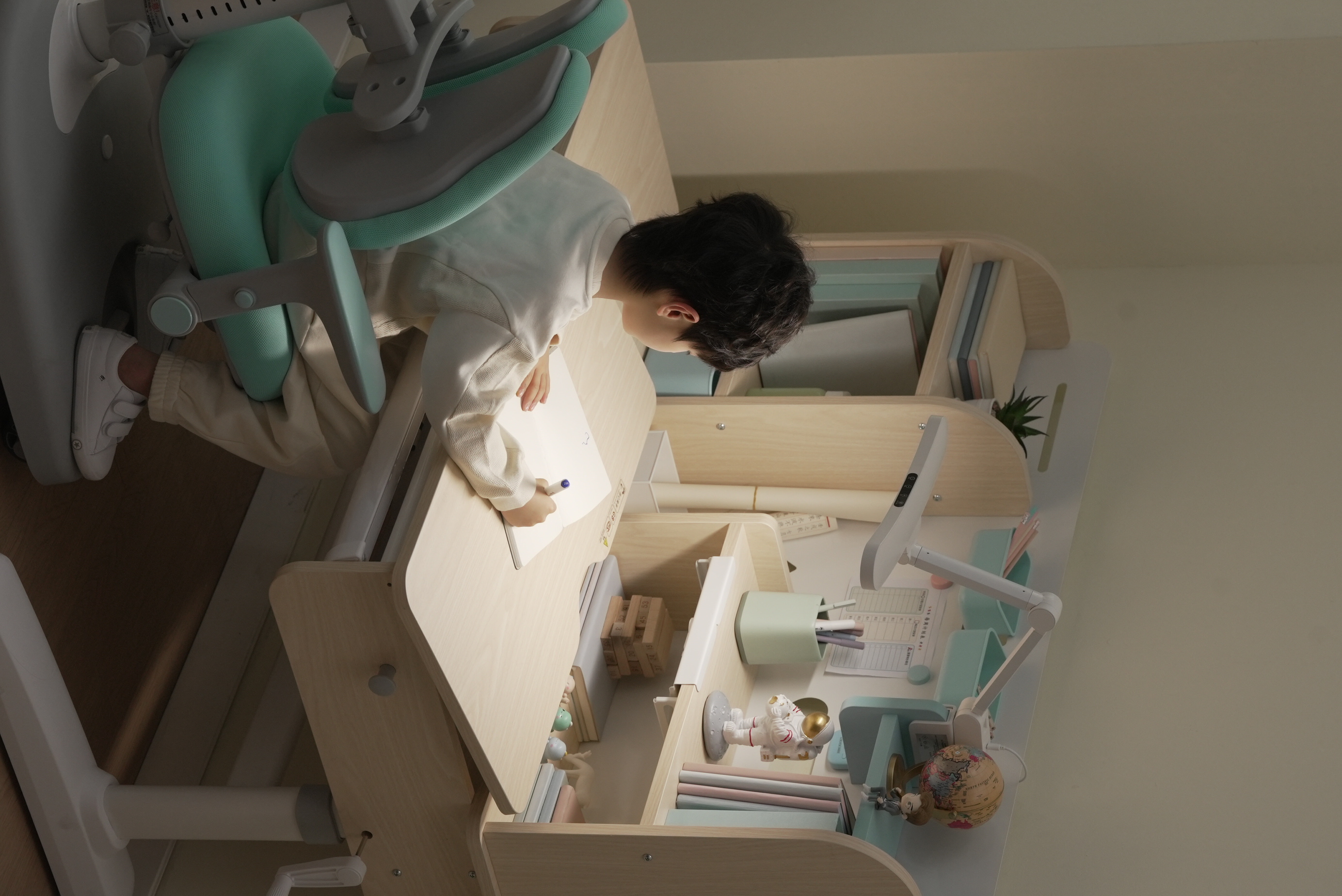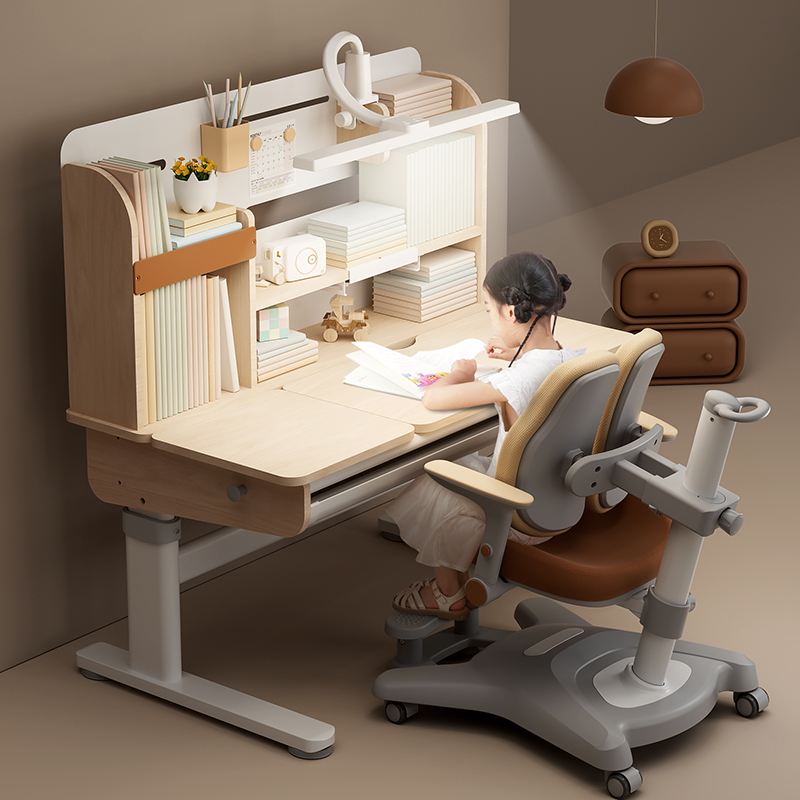Popular Science on Differences in Desk and Chair Needs for Children of Different Ages
As a professional supplier of children's study desks and chairs, we deeply understand that children have distinct needs for study desks and chairs at different stages of growth. Correctly matching the desk and chair needs of children of all ages is not only related to their learning experience but also has a profound impact on their physical development. Next, we will popularize the differences in desk and chair needs for children of different ages in detail for all purchasers and parents.
Early Childhood (3-6 years old): Safety and Interest First
Children at this stage are active and have gradually developing cognitive abilities, with a full sense of curiosity about the world. The choice of desks and chairs should prioritize safety. In terms of materials, non-toxic, harmless and environmentally friendly materials must be used, such as natural solid wood or plates with high environmental protection standards, to ensure children's health from the source. The edges of desks and chairs must be rounded to eliminate sharp corners and prevent children from accidental bumps during play.
In terms of functions, children in early childhood have limited concentration, and their learning is mainly based on enlightenment and simple games, so there is no need for overly complex functions. Desks and chairs with bright colors and cute shapes can better attract their attention and stimulate their interest in learning, such as those with cartoon images or soft and bright colors. In terms of size, the average height of young children is about 90-120 cm. It is recommended that the height of the desk be 45-55 cm and the height of the chair be 25-35 cm, to ensure that children's feet can stand firmly on the ground and their bodies can relax naturally. Since the height of young children changes relatively slowly, the height adjustment function of desks and chairs at this stage is not necessary, but if there is a certain range of fine adjustment, it can extend the service life and be more practical.
Preschool Age (6-9 years old): Cultivating Habits and Basic Functions
When children enter this stage, they begin to formally receive school education, and cultivating good study habits is crucial. At this time, study desks and chairs need to have certain functions to meet children's growing learning needs. The desk should have appropriate storage space, such as small drawers or open bookshelves, to facilitate children to store textbooks, exercise books and stationery, help them learn to organize items and cultivate a sense of order.
In terms of height adjustment, as children's bodies develop rapidly and their height increases significantly, it is particularly important to choose desks and chairs with adjustable heights. Generally speaking, the height adjustment range of the desk is 50-70 cm, and that of the chair is 30-40 cm, which can adapt to children of different height stages. This can ensure that children keep a proper distance between their eyes and books when studying, prevent myopia; their backs can also get good support, reduce the bad posture of hunchback and protect the healthy development of the spine.
School Age (9-12 years old): Ergonomics and Multifunctional Needs
During this period, children's learning tasks become heavier and their learning time is prolonged, which puts forward higher requirements for the functionality and comfort of desks and chairs. Ergonomic design becomes the focus, and the function of adjustable tilt of the desk surface is very practical. When children read, the desktop can be adjusted to 15-20 degrees to relieve neck pressure; when writing, it can be adjusted to 0-5 degrees, which conforms to the hand force habit. The chair should have good waist and back support, and the backrest can be designed to fit the curve of the human spine, so that children can keep the natural physiological curvature of the spine during long study hours and reduce fatigue.
At the same time, to adapt to diversified learning scenarios, such as painting and handcrafting, the size of the desk should be appropriately increased. The length can be 80-100 cm and the depth 60-70 cm, providing sufficient operating space. In terms of materials, choose wear-resistant and easy-to-clean desktop materials to meet the needs of children's frequent use.

Adolescence (12-18 years old): Large Space and Mature Design
In the adolescent stage, learning tasks are heavy and academic competition pressure is increasing. They need more learning space to place various books, materials and electronic learning equipment. The length of the desk is recommended to be 100-120 cm or even longer, and the depth is 70-80 cm, to ensure that there is sufficient space on the desktop for placing computers, desk lamps, books, etc., and also provide a spacious area for learning activities such as writing, reading and reviewing.
At this time, children also have their own aesthetic preferences for the appearance design, and tend to be simple, mature and professional styles, avoiding too childish shapes and colors. In terms of functions, in addition to height adjustment (the height adjustment range of the desk is 60-80 cm, and the height of the chair is 40-50 cm) to adapt to the continuous growth of height, a strong storage function is also indispensable, such as multi-layer drawers and large-capacity bookcases, to help children classify and organize learning supplies, create a neat and orderly learning environment and improve learning efficiency.

In conclusion, there are significant differences in the desk and chair needs of children of different ages. Whether purchasers purchase in bulk or families carefully select for their children, they must fully consider the age stage of the children and choose the study desks and chairs that match them. As a supplier, we will continue to provide more professional products and services that are more in line with children's growth needs, helping children learn healthily and thrive.



